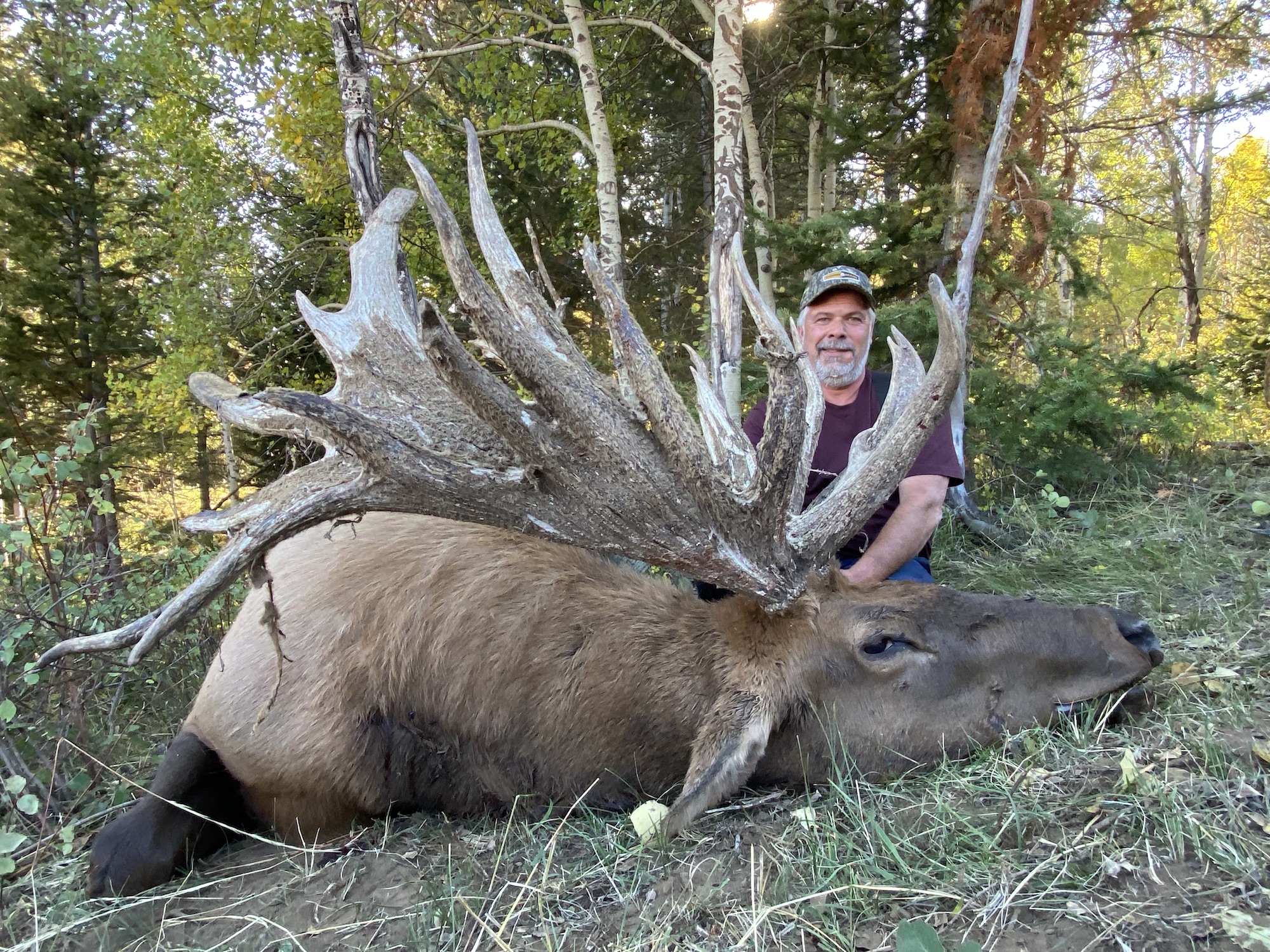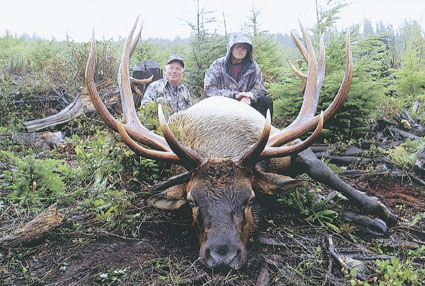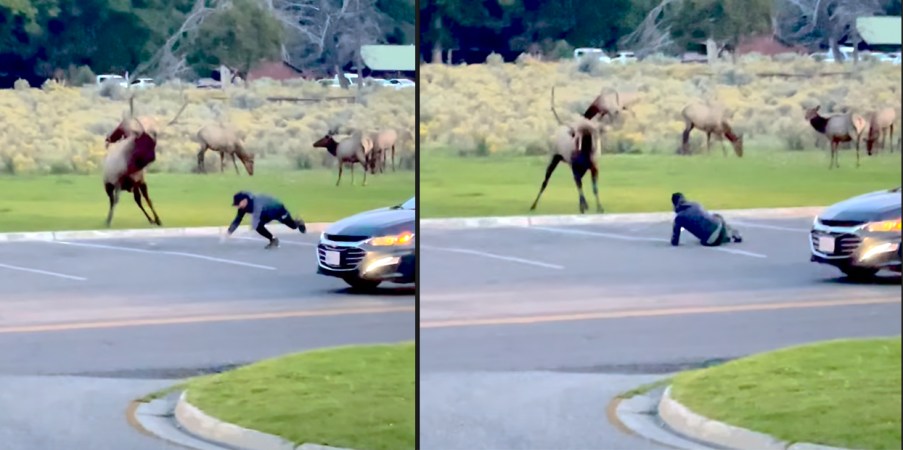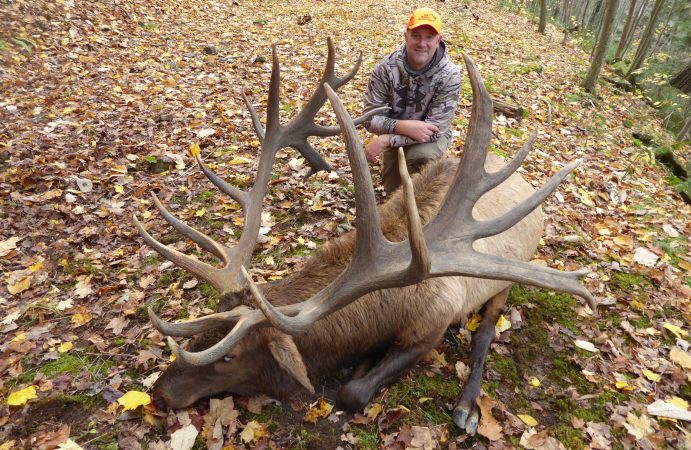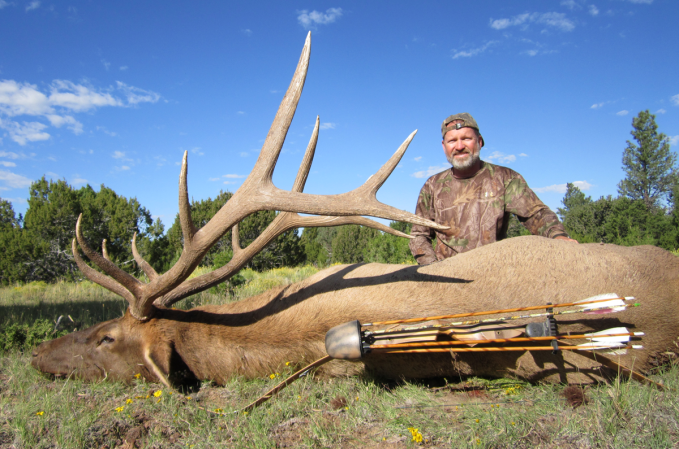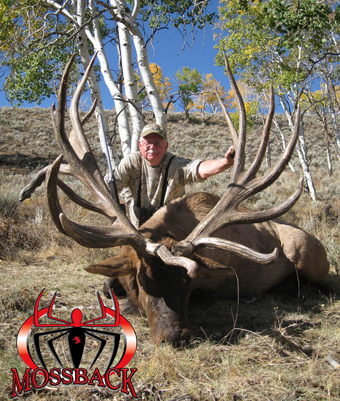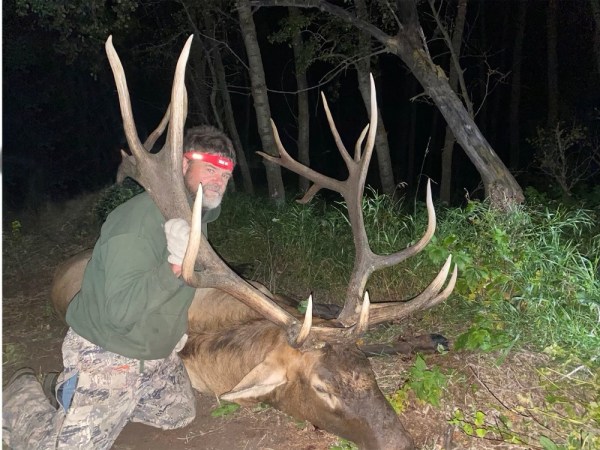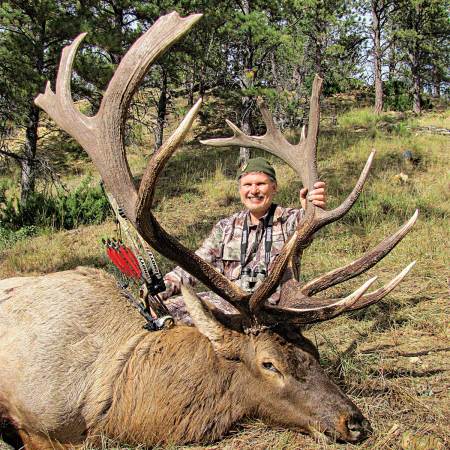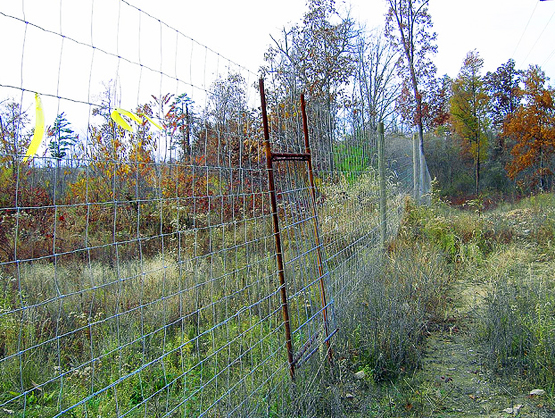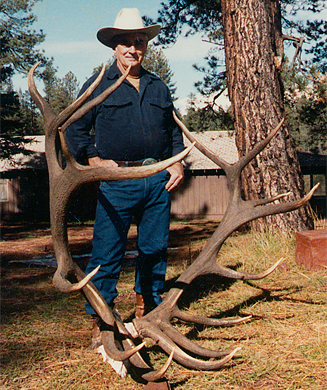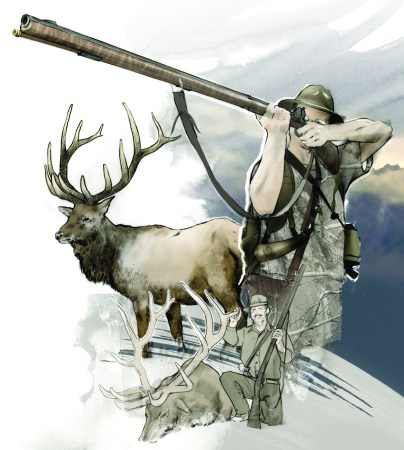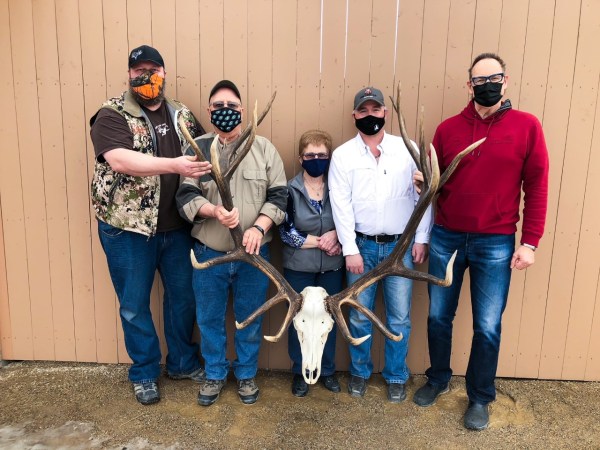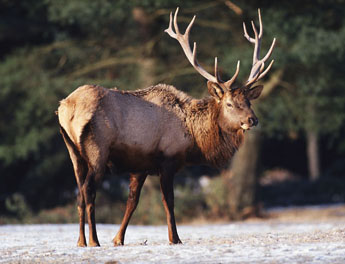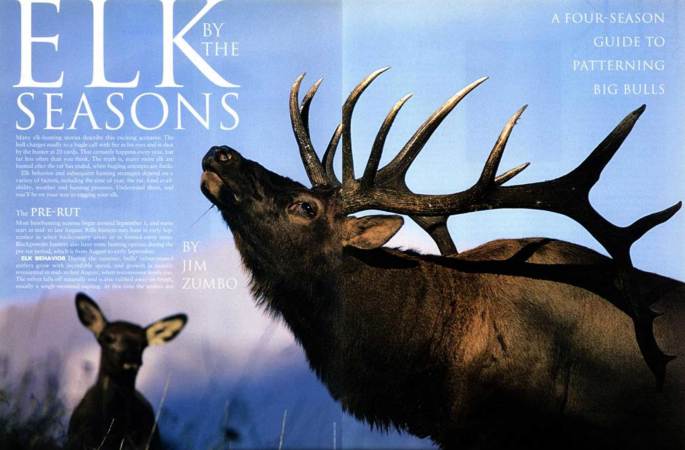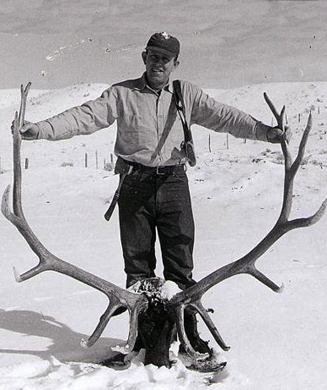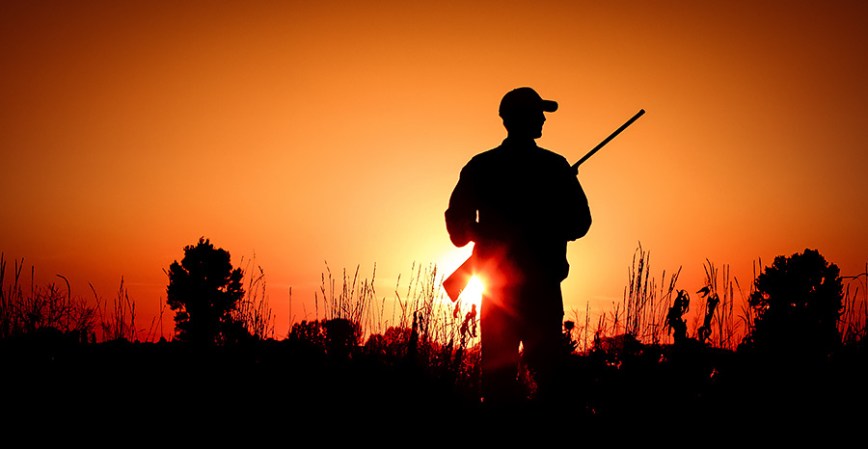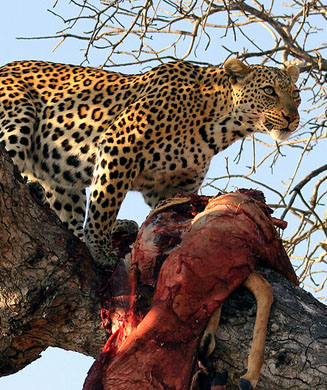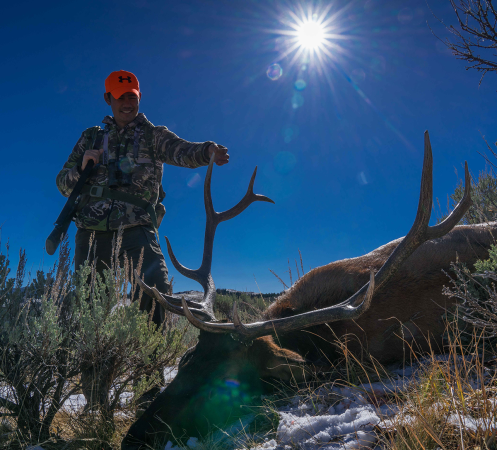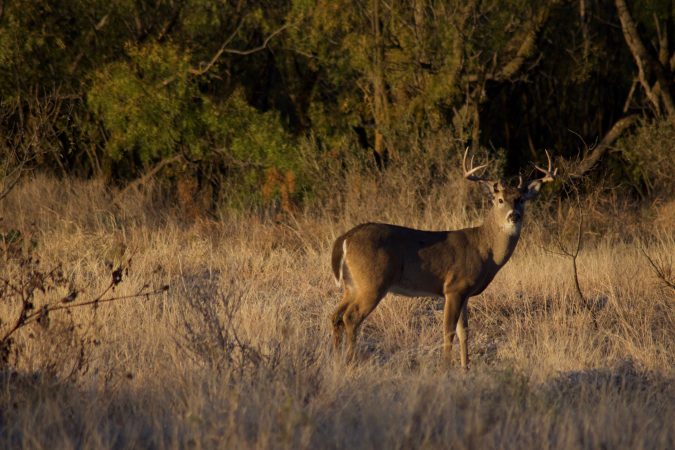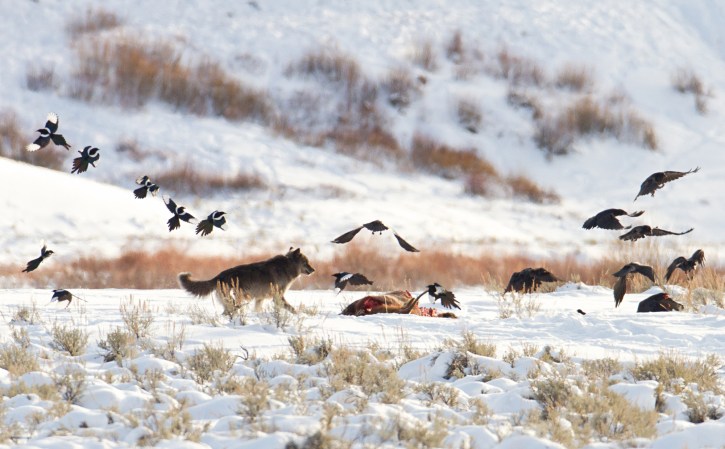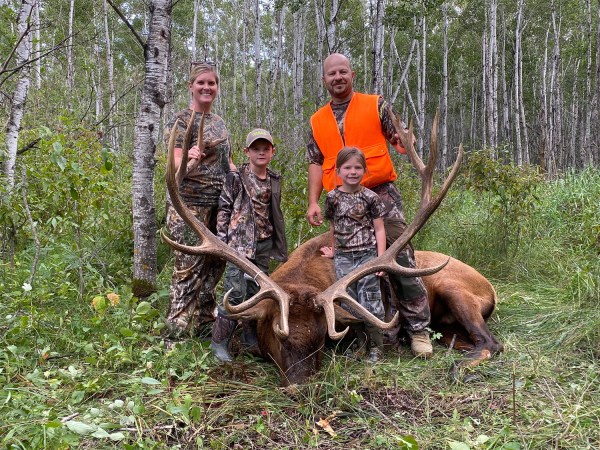A freakishly huge bull elk that was killed on a high-fence ranch in southeastern Idaho could potentially set a new world record in Safari Club International’s Record Book. Brian Dhooghe harvested the bull from Broadmouth Canyon Ranch, and he brought the meat from the animal into Bay City Sausage in Aberdeen, Washington, to be processed last week.
The local game processor shared photos of the massive bull’s rack on Facebook, where they’ve generated upwards of a thousand comments. The majority of those comments are negative, as many took the opportunity to criticize the idea of shooting elk on a game preserve.
Outdoor Life, the Boone & Crockett Club, Pope & Young Club, National Deer Association, and other hunting organizations do not believe that taking animals behind a high fence qualifies as traditional fair chase. But still, high-fence hunts are a multi-million dollar business in the U.S., and simply turning a blind eye, or leaving negative comments on a Facebook post, won’t change that. So, it’s worth taking a closer look at these types of hunts—or shoots—and some of the animals they produce.
Some commenters on the Facebook post questioned if the animal was even real, and a few claimed the pictures were Photoshopped. But according to Kyle Strode, who works at Bay City Sausage and saw the rack in person, it’s real, alright.
“Yeah, it was pretty wild. I took a picture of the rack,” Strode tells Outdoor Life, adding that he knew Dhooghe from processing some of his other animals over the years. “Brian has been bringing stuff in forever. So, yeah. It’s a legit animal.”
Outdoor Life was also able to catch up with Dhooghe, who shared the story behind the giant bull.
“What the hell is that thing?”
Brian Dhooghe never claimed his bull was wild or that he killed it “way out in the boon-toolies.” He says he didn’t travel to Idaho just to shoot a record-sized bull that he could brag about. His trip to Broadmouth Canyon Ranch was a 50th birthday present from his wife. The trip was initially booked in 2020, and after a two-year pandemic delay, Dhooghe went out to the ranch last Monday.
He says he had originally paid to shoot a 500-inch bull (for context, the Boone & Crockett Club world-record nontypical elk, known as the famous Spider Bull, scored 478 5/8 inches), but then the head guide made him a deal he couldn’t pass up. The guide mentioned a record-class bull they had walking around the 10,000-acre ranch. He told Dhooghe if they could find it, he could shoot that elk in addition to a mid-500’s bull, and he threw out a price that Dhooghe was willing to pay.
In most high-fence operations, the client chooses which species and size of animal they would like to shoot and then is charged accordingly. For example, Bull Basin, a high-fence operation in Colorado charges $15,900 for a 381- to 399-class bull. Most of these operations guarantee success.
“They had told us this potential record was walking around, but I wanted a nice, big, sexy-looking bull to mount on the wall. And this thing is definitely not that,” Dhooghe says. “He’s ugly. I mean he’s awesome, but kind of freaky lookin’. It looks like something prehistoric, like, what the hell is that thing?”
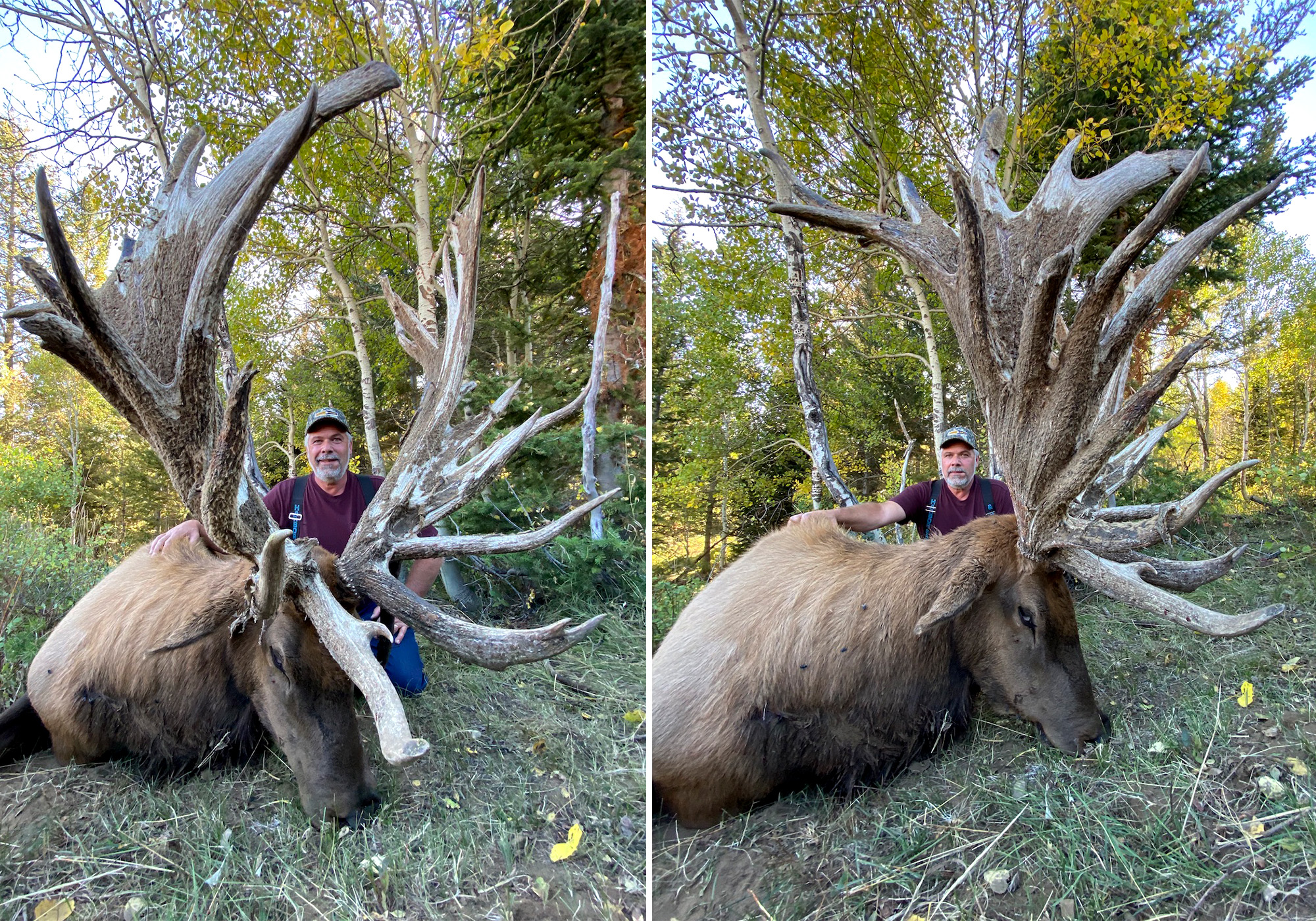
Dhooghe shot his first bull (which scored 571 inches) during one of his first mornings on the ranch. The next day, he joined a group of four other folks for an afternoon elk drive, where the shooters lined up at the end of a patch of timber and the guides walked through the trees pushing the animals out. The others were looking for 300- to 400-class bulls, so when they saw the record-sized bull step out, there was no question as to who would take the shot.
“We’re all sitting there when up comes this thing,” Dhooghe says. “We saw him close to 400 yards, so I put him in my scope and the damn thing didn’t even fit in there!”
Dhooghe shouldered his .300 Weatherby and waited for the bull to reach 150 yards. With the bull quartering to him, he aimed in front of its shoulder and fired. The hand-loaded, 180-grain Nolser Accubond bullet took out the bull’s heart, and after trotting about 15 feet, the massive animal cartwheeled over and died.
A High-Fence World Record?
Two of the guides at Broadmouth Canyon Ranch are certified as scorers by SCI. Dhooghe says that when they put a tape to the bull’s rack, they conservatively scored it at 648 and 4/8 inches.
Unlike Boone and Crockett and the Pope and Young Club, which don’t allow animals harvested on high-fence ranches into their record books, SCI recognizes these trophies as potential records. The organization simply categorizes them as “estate animals.”
Read Next: The Biggest Nontypical Whitetails of All Time
Dhooghe still has to wait until the mandatory 60-day drying period is up. At that point, he plans to bring the rack to an SCI-certifed master scorer in Washington State. If the master scorer concurs with the original green score, the rack will then be judged by a panel of five or six master scorers, who would make the ultimate call as to whether Dhooghe’s bull replaces SCI’s current world record for the biggest bull ever killed with a rifle.
To clarify, bigger bulls have been killed at Broadmouth Canyon Ranch. This September, a hunter named Brian Bailey shot an elk there with a pistol that scored 689 and 6/8 inches, according to the ranch’s Facebook page.
Outdoor Life reached out to SCI, but their Record Book Committee was unwilling to comment on Dhooghe’s bull until they see it officially. SCI’s Online Record Book has two separate books for non-typical Rocky Mountain Elk—one for elk harvested on high-fence ranches and the other for free-range animals. Looking at the high-fence record book, the biggest bull killed with a rifle was harvested from Bull Basin Ranch in Gunnison, Colorado, in 2020. It scored 648 and 2/8. The high-fence record book also includes two larger bulls: a 649-and-2/8-inch bull taken with a crossbow from a ranch in Utah, and a 671-inch bull killed with a muzzleloader from an undisclosed location in Saskatchewan.
High-Fence Controversy and Ethics
The overwhelming number of negative reactions to Bay City’s original Facebook post are proof that a lot of people (hunters included) have strong opinions about high-fence hunting. Many hunters bristle at the notion of killing an animal inside a fenced enclosure—no matter how large the enclosure may be. They make a distinction between “hunting” and “shooting”, saying that high-fence operations violate the most basic fair chase principles and create unnaturally large specimens that are more akin to livestock than wild animals. To many hunters, these outsized antlers and breeding programs designed to grow the largest racks possible degrade the importance of truly wild animals which earn every inch they grow and season they survive.
Plus, high-fence whitetail operations are under extra scrutiny these days as they’ve been connected to the spread of Chronic Wasting Disease.
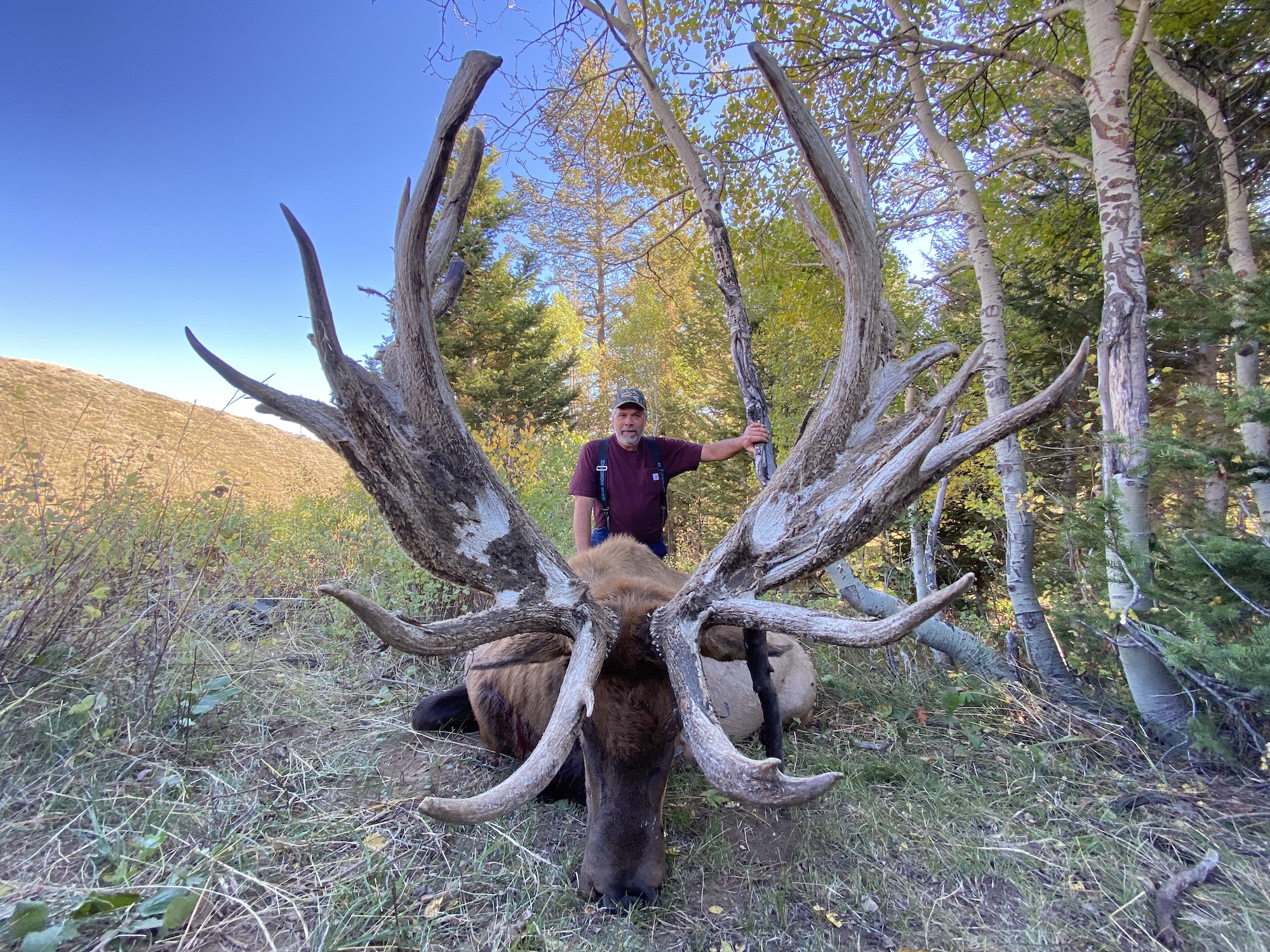
“Bought bull, high fence pet,” one commenter wrote. “Basically an animal raised like a beef cow that rich dudes pay to shoot. Would be no different or challenging than running down to your local dairy and shooting a Holstein cow with its head in a feed trough.”
It’s important to note that Dhooghe never violated any laws and never did anything to bring this heat upon himself. He didn’t brag about the elk or lie about where it was shot (the way some high-fence hunters have with trophy animals). In fact, Dhooghe isn’t even on social media. If it wasn’t for Bay City’s post, hardly anyone would know about the bull he harvested in Idaho.
“I don’t have Facebook, but my wife does,” he says. “I was looking at some of those comments and I had to quit looking because all it did was piss me off. All these people on there…can’t you just be happy for a guy to kill an animal like that?”
Dhooghe admits that he understands all the controversy around what SCI calls “estate animals.” At the same time, though, he says that regardless of what most people think, not all high-fence operations are created equal.
Read Next: Our Favorite Cartridges and Rifles for Hunting Elk
“I think there are places out there that give this kind of hunt a bad name. Where they keep them in a pen and you basically go out and pick one, so they can kick it across the field and you shoot it,” he says. “This place isn’t like that at all. They bring these elk in and then they turn them loose on 10,000 acres. My bull had been on that ranch for four years. He’s not a tame elk like everyone wants to think he is.”
No matter how much the hunting community decries high-fence hunting, there are clients willing to fork over tens of thousands of dollars in return for a guaranteed opportunity at trophy-class animals that they won’t get otherwise. And, there are plenty who say these hunting estates have their place. The North American Elk Breeders Association lists several reasons for why game preserves exist, including the opportunities they provide for physically challenged hunters, and the incentive they give landowners to turn a profit while maintaining large, undeveloped open spaces as wildlife habitat.
“I just can’t let it bother me, and it really doesn’t,” Dhooghe says about the vitriol over his giant bull. “I think I was 12 years old when I started hunting, and I never dreamed I would shoot an animal like that, or even have the opportunity to. I’m ecstatic about it.”

